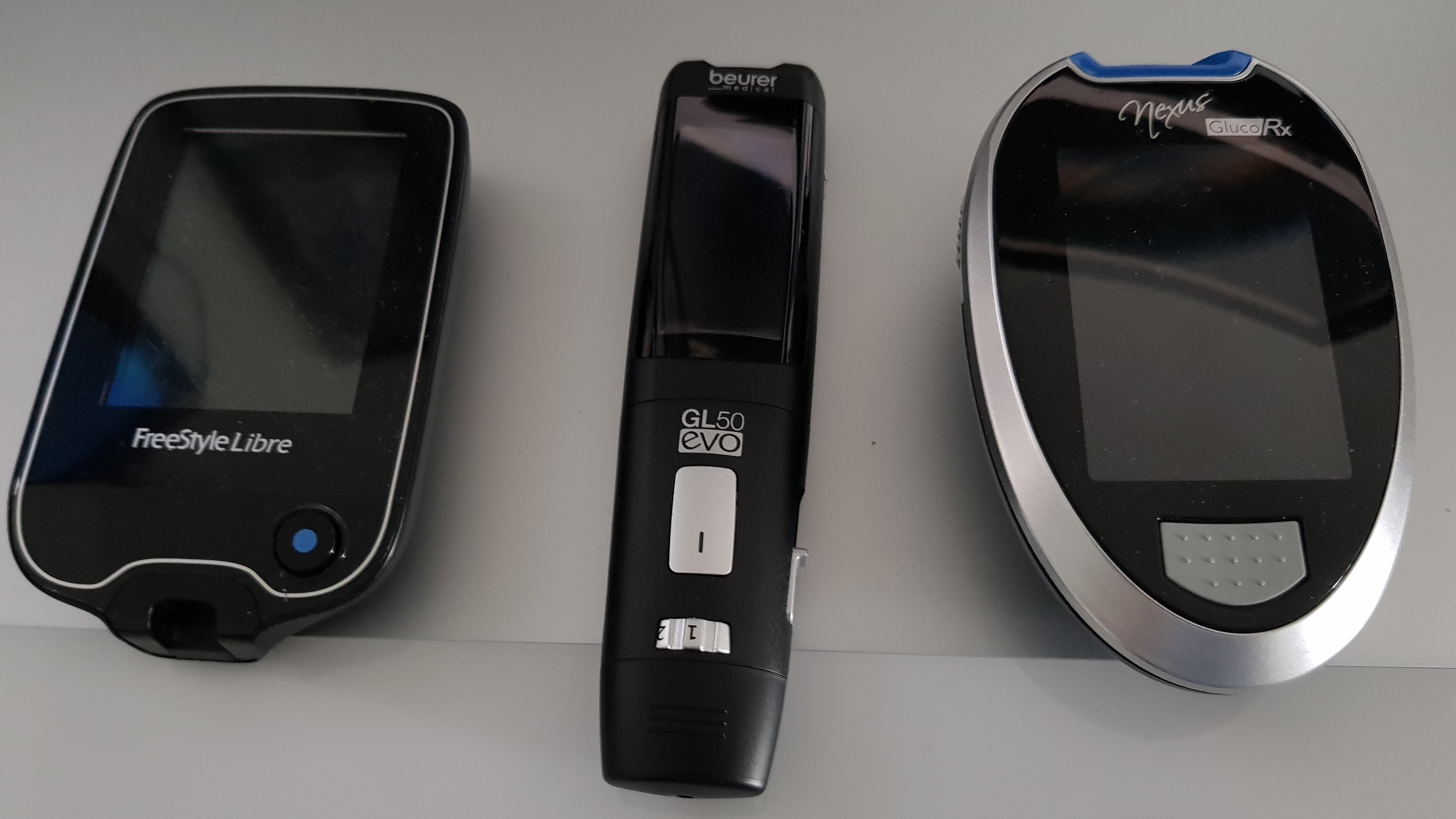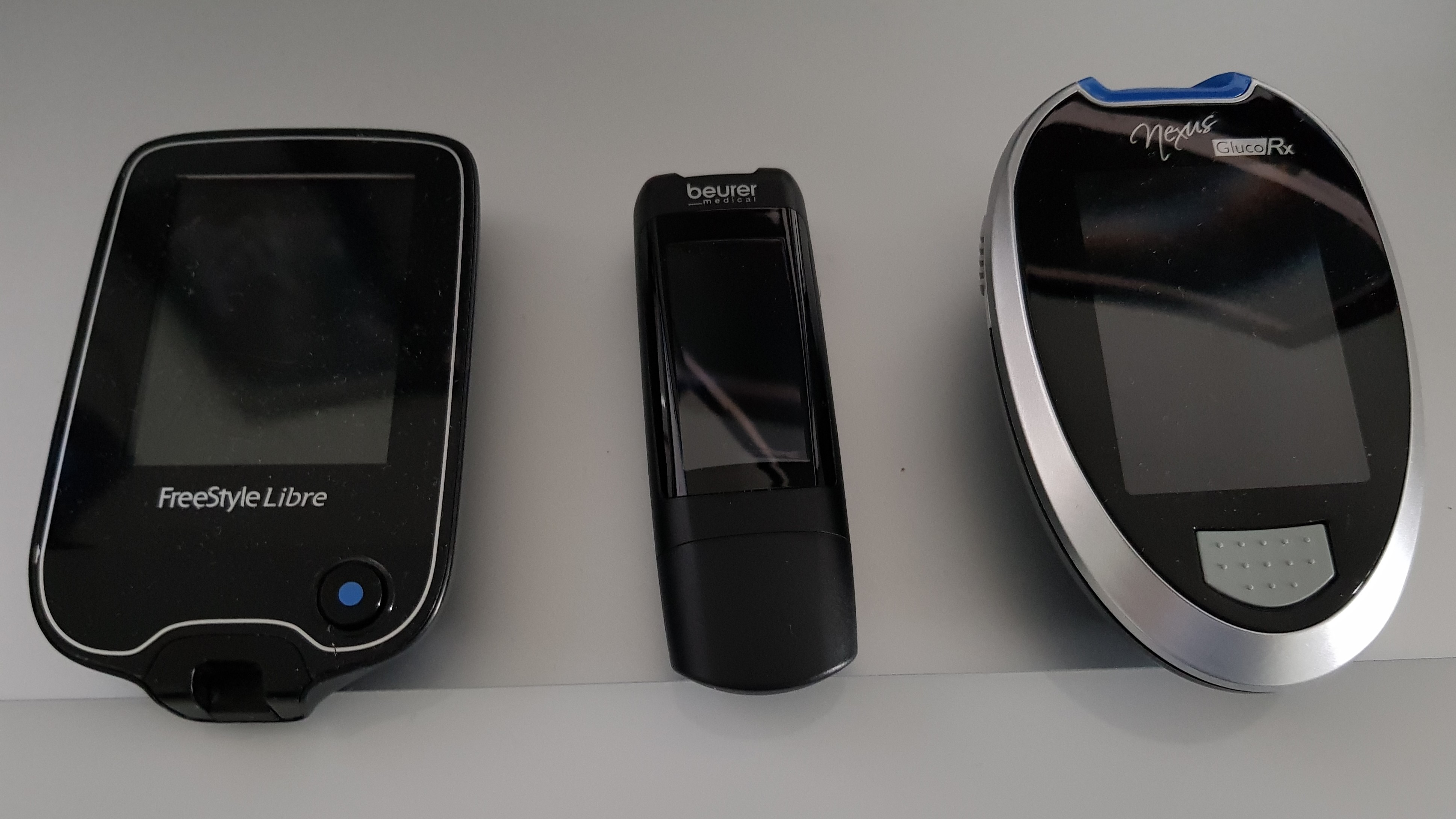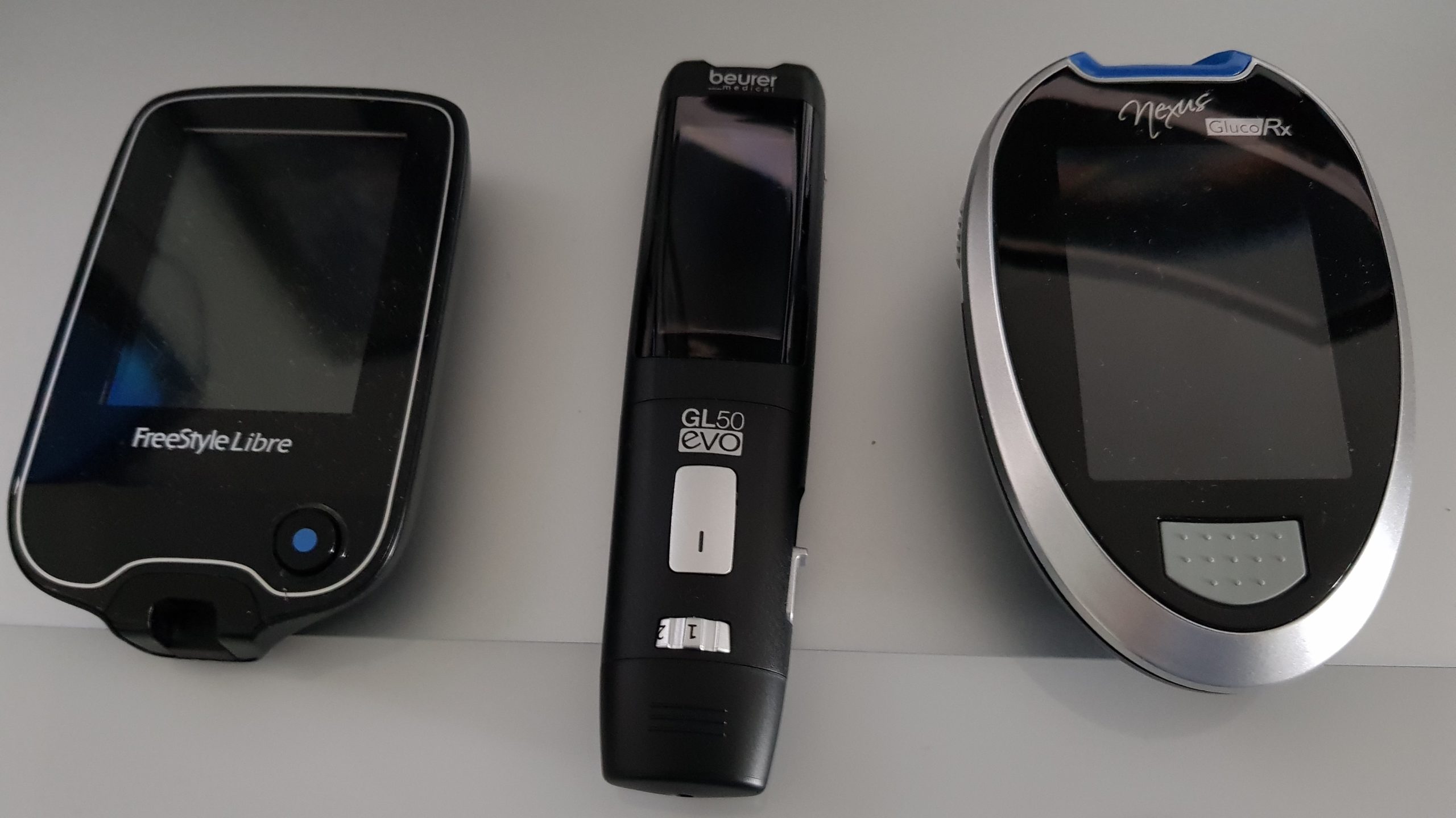I was looking for a new puzzle to solve after I finally finished with the GlucoRx Nexus (aka TaiDoc TD-4277), so I decided to check out what Boots, being one of the biggest pharmacy in the country, would show on their website under “glucometer”. The answer was the Beurer GL-50, which surprised me because I didn’t know Beurer did glucometers at all. It also was extremely overpriced at £55. But thankfully I found it for £20 at Argos/eBay, so I decided to give it a try.
The reason why I was happy to get one was that the the device itself looked interesting, and reminded me of the Accu-Chek Mobile, with its all-in-one design. While the website calls it a 3-in-1, there are only two components to the device: the meter itself and the lancing device. The “third” device is the USB connector that appears when you disconnect the other two. I have to say that this is a very interesting approach, as it makes it much easier to connect to a computer — if it wasn’t that the size of the meter makes it very hard to connect it.
On my laptop, I can only use it on the USB plug on the right, because on the left, it would cover the USB-C plug I use to charge it. It’s also fairly tall, which makes it hard to use on chargers such as my trusted Anker 5-port USB-C (of which I have five, spread across rooms.) At the end, I had to remove two cables from one of them to be able to charge the meter, which is required for it to be usable at all, when it arrives.
To be honest, I’m not sure if the battery being discharged was normal or due to the fact that the device appears to have been left on shelves for a while: the five sample strips to test the device expire in less than two months. I guess it’s not the kind of device that flies off the shelves.

So how does the device fare compared to other meters? Size wise, it’s much nicer to handle than the GlucoRx, although it looks bigger than the FreeStyle Libre reader. Part of the reason is that the device, in its default configuration, includes the lancing device, unlike both of the meters I’m comparing it with above. If you don’t plan to use the included lancing device, for instance because you have a favourite lancing device like me (I’m partial to the OneTouch Delica), you can remove the lancing device and hide the USB plug with the alternative provider cap. The meter then takes a much smaller profile than the Libre too. I actually like the compact size better than the spread out one of the FreeStyle Precision Neo.

Interface-wise, the gl50 is confusingly different from anything I have seen before. It comes with a flush on/off switch on the side, which would be frustrating for most people with short nails, or for people with impeded motion control. Practically, I think this and the “Nexus” are at opposite ends of the scale — the TD-4277 has big, blocky display that can be read without glasses and a single, big button, which makes it a perfect meter for the elderly. The gl50 is frustrating even for me in my thirties.
The flush switch is not the only problem. After you turn it on, the control you have is a wheel, which can be clicked. So you navigate menus in up-down-click. Not very obvious but feasible. But since the wheel can easily be pressed in your purse, that’s why you got the flush switch, I guess. The UI is pretty much barebone but it includes the settings for enabling Bluetooth (with a matching Android app, which I have not checked out for this review yet), and NFC (not sure what for). Worthy of note is that the UI defaults to German, without asking you, and you need to manage to get to the settings in that language to switch to English, Italian, French, or Spanish.
Once you plug it into a computer with Windows, the device appears as a standard CD-Rom UMS device that includes an auto-started “portable” version of the download software, which is a very nice addition, again reminiscent of the Accu-Chek Mobile. It also comes with an installer for the onboard software. As a preview of the technical information post on this meter, it looks like that, similar to the OneTouch Verio, the readings are downloaded through UMS/SCSI packets.
I called out Windows above because I have not checked how this even presents on macOS, and on Linux… it doesn’t. It looks like I may have to take some time to debug the kernel, because what I get on Linux is infinite dmesg spam. I fear the UMS implementation on the meter is missing something, and Linux sends a command that the meter does not recognize.
The software itself is pretty much bland, and there’s nothing really much to say. It does not appear to have a way to even set or get the time for the device, which in my case is still stuck in 2015, because I couldn’t bother yet to roll the wheel all the way to today.
Overall, I wouldn’t recommend this meter over any of the other meters I have or used. If beurer keeps staying in the market of glucometers (assuming they are making it themselves, rather than rebranding someone else’s, like GlucoRx and Menarini appear to do), then it might be an interesting start of further competition in Europe, which I would actually appreciate.


Hello, I haven’t seen any test of bgstar or Mystar Extra from Sanofi.
I use them with Linux and MacOs. Reverse engineering was easy.
They use serial device. I use pyserial.
I have written a small app to get data, get/set date and time.
I have just bought a GL 50 evo, but after reading your review I regret my choice.
As warranty will stop in december, I think I’ll buy a new Mystar Extra.
Hello, I haven’t seen any test of bgstar or Mystar Extra from Sanofi.
I use them with Linux and MacOs. Reverse engineering was easy.
They use serial device. I use pyserial.
I have written a small app to get data, get/set date and time.
I have just bought a GL 50 evo, but after reading your review I regret my choice.
As warranty will stop in december, I think I’ll buy a new Mystar Extra.
I’ve never seen the Sanofi meters around, so I wasn’t aware of them.
If you do have a protocol reversed, would you consider adding it to https://protocols.glucometers.tech/ ?
If you want to add a driver for it to glucometerutils I’m sure others will find it useful, but I’m honestly more interested in making sure we keep track of all the various protocols 😀
Ok. I’ll clone Github project, create a dir for Sanofi, add a new page (.md) for the two meters, and then send a pull request.
Is this the way I have to do it?
Yes, thank you! I have a couple other pull reviews pending that I’ll go through over the weekend 😀
Can you please take a look at this page before I send a pull request.
Let me know if it’s ok or if I have to change something
Hi,
As for you, I’ve tried to use Beurer GL 50 evo with Linux, and as for you I had an infinite loop in dmesg.
I have a similar issue with MacOs (Catalina).
Today I have ordered a bluetooth adapter just for “playing” with this meter.
After doing that, I have taken a look at my Debian unstable, and found that kernel 5.5 RC5 was available.
I have installed it, and connected the meter.
Bingo! It worked immediately.
Module sr0 has been loaded, and device /dev/sr0 has been created, with a /dev/cdrom link to it.
I think that sr0 is SCSI.
After mounting the device, I can see the filesystem. Same as with Windows.
The remaining question is: how read measures?
I’ve not managed to reverse engineer the actual protocol yet, because it appears to be encapsulated over SCSI commands, so I don’t really have an answer on how to download the data yet.
It doesn’t help that the last SCSI library I tried to use is not working in Python 3 anymore, and nobody appears to have wrapped a better library (and I haven’t had time to play with that yet.)
But interesting to know that this fails on macOS as well.
Also, while some distros are fine with the meter on 5.5, there might be configs to enable until 5.7 (patch merged over the weekend).
Hi @Flameeyes, I have finally reverse engineered the Android app that communicates with the device. I use for this an ESP32-C3 micro controller. So it is multi platform. I can now download all measurement from the GL50 EVO. The code is here: https://github.com/N0ury/ESP32-GL50_EVO-BLE/tree/main
It’s a first version, code is not very nice. I’ll do better, but it works!
Hi,
Here are some news.
I have written two scripts for this glucometer.
One that uses Bluetooth Low Energy extension.
It works on Mac, Linux and Windows.
It is available here: https://github.com/N0ury/pygl50_evo-BLE
The second uses the USB port. It works on Mac only. Healthmanager app already exist for Windows. Linux doesn’t recognize the dongle. It is written in Python too and uses pyusb.
It is available here: https://github.com/N0ury/pygl50_evo-USB
USB script works on Linux too now.
Hey Nathan, thank you so much for this! I haven’t had enough time to look into much of any of my glucometers’ projects in the past two months or so, so I’m glad to see others publishing their work 🙂
If you feel like sending a description of the protocol for https://protocols.glucometers.tech/ do let me know, either with a pull request or an email, my address is (with little imagination on my part) flameeyes [at] flameeyes [dot] com.
55£ sounds insane, I paid 9.74 EUR for the GL 50 17-NOV-2020 and 9.74 EUR for the GL 50 evo on 25-NOV-2020. The GL 50 evo Bluetooth adapter cost 14.61 EUR.
(on http://www.beurer.de )